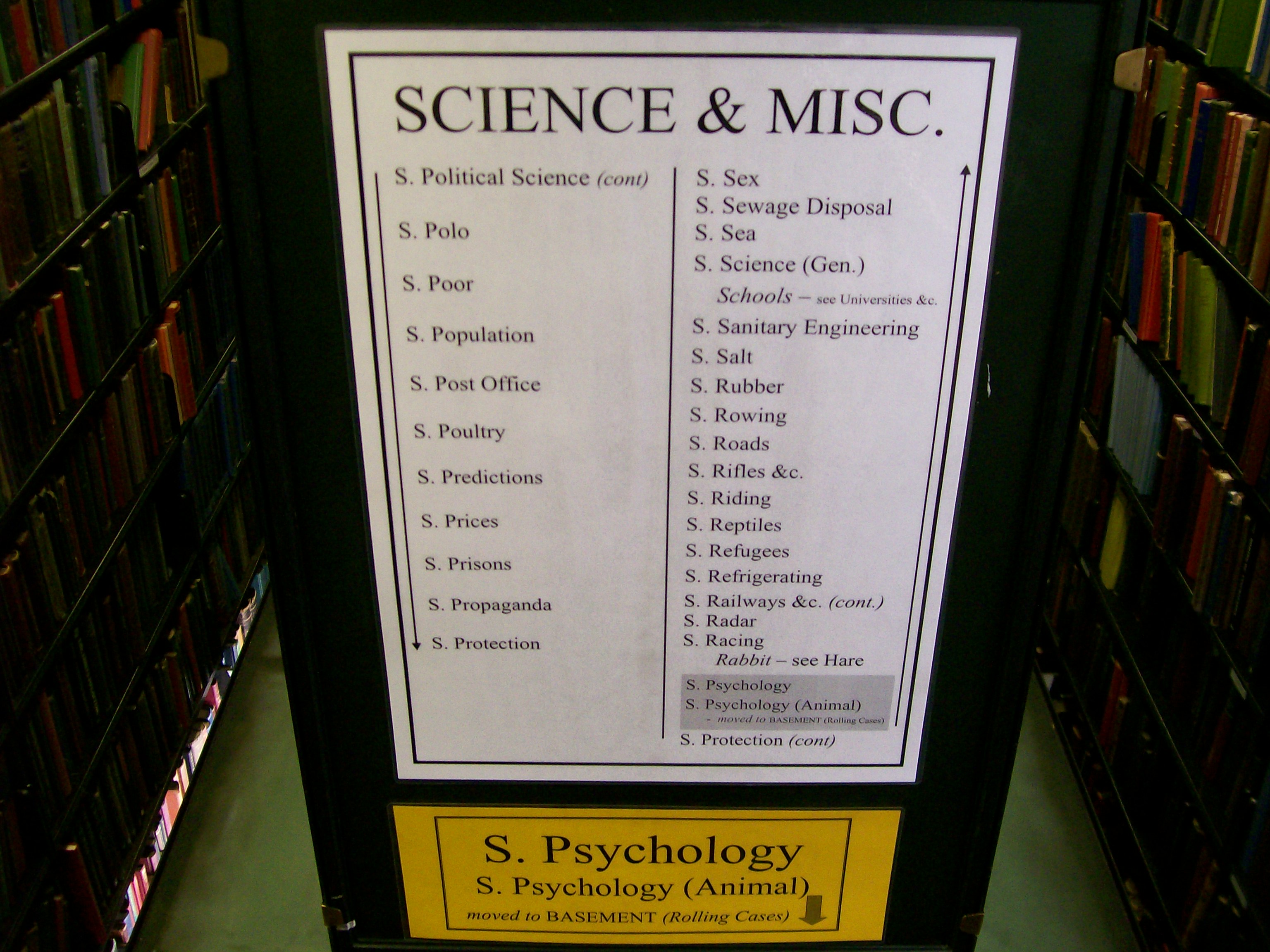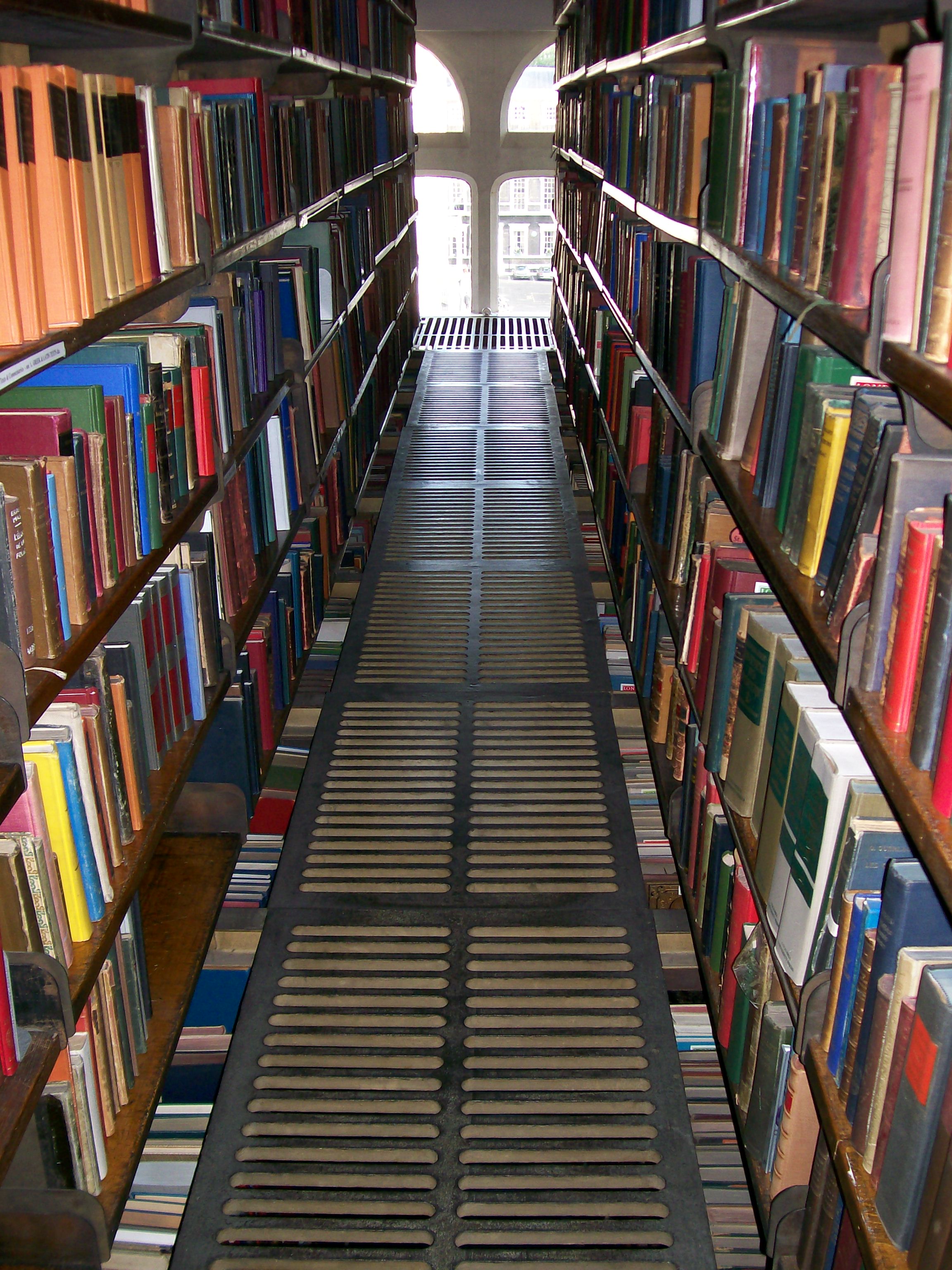Ever since we added the collections of the London Library to Copac in early 2012, I’d been hoping for a chance to visit. The Copac team are based in Manchester, and I don’t often get spare time in London, so when I found myself with a couple of unexpected hours, I knew exactly where I wanted to go!
From St James’s Square, the London Library doesn’t look big enough to hold over a million books. The original building has been extended and refurbished over the years, to accommodate the library’s ever-growing collection.
And it really is growing! One of the London Library’s unique features is that (unlike most libraries) their collection is never weeded. What goes in the London Library, stays in the London Library. This leads to a fascinating collection, full of the works that other libraries may have discarded.
I was shown round the building by Head of Acquisitions Gill Turner, who explained how they get their stock. Some of it is donations, often from the private libraries of members. Members might build up a specialised collection in a certain area, which they then pass on to the library, allowing the London Library to acquire small special collections around subjects as diverse as sundials and Australia.

Much of the acquisition is patron-driven. Gill showed me the Suggestions book, which sits in the foyer, and where users can record anything from book requests to reports of faulty lightbulbs. Before access to the library foyer was restricted, journalists from the evening papers used to pop in on slow news days to scour the comments book for titbits for their gossip columns.
When it comes to actually acquiring the works that members request, the library is able to do so through booksellers channels rather than the usual library suppliers, thanks to the influence of former President T S Eliot. Gill explains that this can allow the library to acquire books more quickly than through traditional library channels as they also do not require any servicing of the books.
They’re able to move quickly to catalogue acquisitions, too. The library is part-way through a major retrospective cataloguing project, transferring the records to the online catalogue. Employing 7 FTE cataloguers in the Bibliographic Services team also means that the library has the cataloguer-power to process new acquisitions very quickly, meaning that they’re often the first library on Copac to have records for recently-published items.
From the back rooms, Gill took me on a tour round the building, which is a wonderful amalgam of airy, hushed reading rooms and labyrinthine stacks – all full of books, books, books! The collections are split into Art, Literature, History, Religion, Biography, Fiction, Topography, Periodicals and Science & Miscellaneous along with smaller collections in Philosophy, Philology, Bibliography, Genealogy and of course the reference collection in the Reading Room. I could happily spend hours just browsing the shelfmarks in Science & Miscellaneous. The alphabetical ordering gives rise to wonderful concatenations and serendipitous discoveries, with ballooning, baths, beer, bees and bells all cosying up to each other.
As well as the books, the building itself is fascinating, with odd crannies, mysterious doors, and a slightly-vertigo inducing floor in the back stacks. Made up of metal grilles, it allows you to look down to the floor below, and causes problems for cataloguers working on the retro project, who have to ferry books across by the armload, as the floor won’t admit trolleys (this led to me, cheesily and I’m sure unoriginally, dubbing it a ‘cattle-oguer grid’).

As we go round, Gill tells me more about the workings of the library. We peek into the main reading room, set aside for entirely silent study (no laptops – the typing disturbs other members). This silence is highly valued – indeed, the library has recently seen a rise in student members who value the silent study space more than the book stock. This is an intriguing change of membership for the library, whose users were traditionally more long-term members, often treating the library as a club, or local lending library.
The London Library does lend out its stock. London members are allowed to borrow up to ten books at a time (more for a fee), while ‘country members’ who live more than 20 miles from the library are allowed to borrow up to 15. The library doesn’t have a dedicated inter-library loans department, and all ILL requests are handled by the country members support team. This may be changing! Since the library’s holdings were added to Copac, requests for ILLs have increased dramatically.
Before I leave, Gill shows me the bound volumes of the original library catalogue. Still well-used, the volumes are full of annotations, and are a fascinating snapshot of the development of the collection. Although around 65% of the catalogue is now online, some older users still prefer to consult the printed catalogue. Book jackets from recent acquisitions are displayed on a wall nearby, to remind users that there are post-1950 acquisitions in the building.
‘And what about ebooks?’ I ask, and am slightly surprised by the answer that they have none. There’s just been no demand for them, explains Gill, though she expects that this might change in the future. They do have an e-library of online reference work and journals, but as yet no-one is clamouring for Kindles.
And, despite being personally addicted to ebooks, I can understand why. I’ve visited many fantastic research and specialist libraries, and the London Library stands up there with the best. The very air feels full of potential, and I’m almost glad to leave before I can lose myself in the stacks. I hope I’ll be back.
Categories

